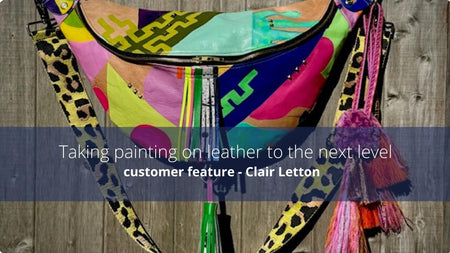In this blog we take a little run through our new contact adhesive and combine it with a few general points to consider when gluing your leathers together.
We are pleased to launch a new contact adhesive for leather that we have worked on with a UK based company.
NEW! Permabond
Permabond is a water based contact glue with a thick consistency. It can be used as it is or diluted., so it is better for the environment and better for you.
As with all contact cements it is about getting a neat even spread over both layers and this goes on a treat. Once it is slightly tacky press together firmly. It will give a firm bond within thirty minutes but as with any contact adhesive it will take 12-24 hours to 'cure'.
Considerations when gluing leather together
1. Avoid getting glue on the front surface of the leather - keep your area as clean as possible and take care when working. If you do notice a leak or spill wipe away instantly - it is a good idea to keep a damp cloth to hand. Glue left on the surface will impede dyes and finishes and leave an annoying mark.
2. Key smooth areas - if you are gluing onto the grain (front) side of a smooth leather you will need to key the surface to get a 'grip' for the adhesive. Use a scratch awl to cross hatch or use fine sandpaper or an emery board.
3. Take the glue to the edge but use a spreader to avoid any glue squeezing out when you press together.
4. Make sure you allow for the 'curing' time for the glue to get a good final fix.
5. Consider the leather you are using - if you are using oil or waxy tannages these can impede adhesion. If the surface to be glue is waxy then use a cotton bud and small amount of 'Fiebings Deglazer' to remove the wax from the area in question.
If the tannage has been oil tanned then any glues may struggle to adhere well.
Remember - belt and braces - glue and stitch!
Finally do not put any excess glue back into the container as this can contaminate the contents and affect the properties of the glue.
Want to see the glue in action? Watch our Glue Review as we run through the features and test it on a firm calf pouch facing and a knife sheath welt....








